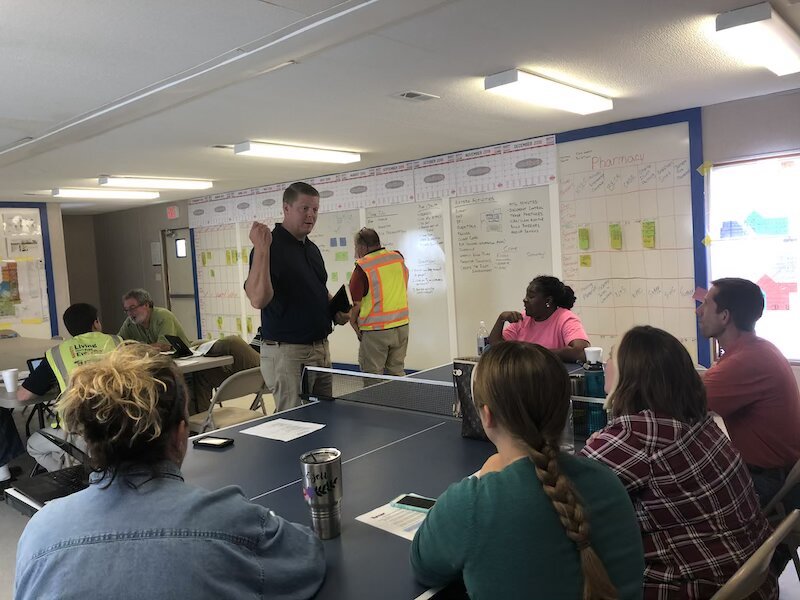Talk to contractors in just about any town in the country, and the topic of labor shortages inevitably comes up. Many contractors see the problem as being chronic with no end in sight, at least while the economy remains strong. But there are companies that are trying to do something about it, with an eye toward cultivating the next generation of plumbers, electricians, carpenters, and other construction laborers.
Earlier this month Lowe’s Cos., the giant home-improvement retailer, teamed with more than 60 partners to introduce Generation T, an effort to shift negative or indifferent perceptions about the trades among students and their parents by demonstrating mobility and career opportunities that skilled trades offer.
Lowe’s and SkillsUSA hosted the first-ever Generation T Bunk Build at Rose Bowl Stadium in Pasadena, Calif. This regional community service project provided 300 students enrolled in SkillsUSA’s carpentry program the chance to work with skilled carpenters to build 100 bunk beds for the nonprofit Sleep in Heavenly Place.
Last summer, Turner Construction’s Nashville office, in partnership with the Rutherford County (Tenn.) Chamber of Commerce, conducted a Teacher Externship Program, an immersive two-week course that gives local middle-school teachers exposure to the ins and outs of the construction industry, so they can share their experiences with their students.
This is the second year this program has been offered. The first year draw five teachers, and the second 20 participants, according to Paul Lawson, Project Executive of Turner Nashville.
Lawson—who chairs the Chamber’s Rutherford Works Construction Council and is a member of its Executive Workforce Council—says that the Teacher Externship Program is part of a larger effort by the Chamber and county to expand the market’s labor force.
The two-week program gave the teachers an inside look at how a construction company works. They spent time at Turner’s office with estimators and area managers. The teachers also went into the field at one of Turner’s local active job sites: a $48 million, 95,623-sf expansion of the St. Thomas Rutherford Hospital in Murfreesboro, Tenn., which is scheduled for completion next April. (Gresham Smith is the architect and engineer on this project.)
Lawson says the teachers “shadowed” project managers, two engineers, two supervisors, and the project’s safety manager.
Turner Nashville intends to offer this program next summer, and Lawson would like to expand the course beyond two weeks, “which is pretty quick” for giving teachers with no previous construction knowledge or hands-on understanding about what’s involved in building a building.
The program, he says, “has helped to open their eyes to what construction really is, and to dispel misconceptions about construction work,” says Lawson. “A teacher can have an impact on, what, 60 students a year.”
For teacher David Duez, the program was a revelation that he shared with his eighth-grade Career Explorations class through a series of lessons. “The kids are very interested in it,” he says. “They are young, but it doesn’t hurt to throw as much as we can at them, and if something sticks, great.”
Related Stories
Healthcare Facilities | May 27, 2015
Rochester, Minn., looks to escape Twin Cities’ shadow with $6.5 billion biotech development
The 20-year plan would also be a boon to Mayo Clinic, this city’s best-known address.
BIM and Information Technology | May 21, 2015
How AEC firms should approach BIM training
CASE Founding Partner Steve Sanderson talks about the current state of software training in the AEC industry and common pitfalls in AEC training.
Architects | May 20, 2015
Architecture billings remain stuck in winter slowdown
Regional business conditions continue to thrive in the South and West
University Buildings | May 19, 2015
Special Report: How your firm can help struggling colleges and universities meet their building project goals
Building Teams that want to succeed in the higher education market have to help their clients find new funding sources, control costs, and provide the maximum value for every dollar.
University Buildings | May 19, 2015
Renovate or build new: How to resolve the eternal question
With capital budgets strained, renovation may be an increasingly attractive money-saving option for many college and universities.
University Buildings | May 19, 2015
KU Jayhawks take a gander at a P3 development
The P3 concept is getting a tryout at the University of Kansas, where state funding for construction has fallen from 20% of project costs to about 11% over the last 10 years.
Retail Centers | May 18, 2015
ULI forecast sees clear skies for real estate over next three years
With asset availability declining in several sectors, rents and transactions should rise.
Contractors | May 18, 2015
Gilbane foresees double-digit growth in construction spending in 2015
In its Spring outlook, the construction company frets about hiring patterns that aren’t fully taking a project’s workload into account.
Architects | May 10, 2015
Harness the connection between managing risk and increasing profitability, Part 2
In Part 1, we covered taking control of the submittals schedule and managing RFIs. Let’s move on to properly allocating substitutions and limiting change orders.
Contractors | May 8, 2015
Trends in U.S. commercial building size in three charts
A new study by the U.S. Energy Information Administration shows that there were 5.6 million commercial buildings in the U.S. in 2012, totaling 87 billion sf of floor space. This is a 14% increase in floor space since 2003.















